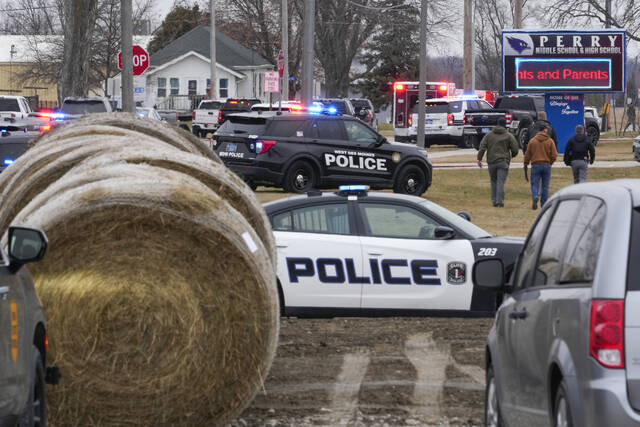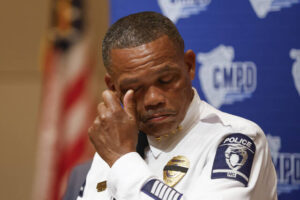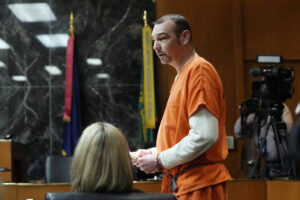Yet another senseless tragedy has occurred, the latest at Perry High School in Perry, Iowa. A school shooting leaving one dead and five wounded starts 2024 inauspiciously.
However, we need more than “thoughts and prayers.” We all demand — and deserve — action. Rather than asking why this happened, let us focus on how to stop it.
But can mass shootings be stopped? As an independent researcher, I decided to apply simple arithmetic to this problem.
I collated the Gun Violence Archive’s and Violence Project’s databases of the top 20 deadliest mass shootings, from Jan. 1, 1966, to Dec. 31, 2023. I treated each incident as involving four or more deaths, not including the perpetrator’s, in the same general location and time.
I recorded the location (city and state) and number of innocent fatalities from the databases. I independently recorded time (hour and minute) and type of organization attacked. I then ordered the data by number of deaths, largest to smallest.
Interestingly, 11 mass shootings out of 20 (55%) fell between 7 a.m. and noon (the Perry shooting occurred at 7:37 a.m.):
- Blacksburg, Va. (7:15 a.m.) — Virginia Tech — 32 deaths
- Newtown, Mass. (9:35 a.m.) — Sandy Hook Elementary — 28 deaths
- Sutherland Springs, Texas (11:20 a.m.) — Sutherland Springs Church — 27 deaths
- El Paso, Texas (10:39 a.m.) — Walmart — 23 deaths
- Uvalde, Texas (11:30 a.m.) — Robb Elementary School — 22 deaths
- San Bernardino, Calif. (10:58 a.m.) — Inland Regional Center — 16 deaths
- Austin, Texas (11:48 a.m.) — University of Texas, Austin — 15 deaths
- Edmond, Okla. (7:01 a.m.) — Post office — 14 deaths
- Binghamton, N.Y. (10:30 a.m.) — American Civic Assn. immigration center — 13 deaths
- Columbine, Colo. (11:19 a.m.) — Columbine High School — 13 deaths
- Washington, D.C. (8:16 a.m.) — Military base — 12 deaths
The 11 shootings between 7 a.m. and noon accounted for a total of 215 deaths (32 + 28 + 27 + 23 + 22 + 16 + 15 + 14 + 13 + 13 + 12 = 215). The 20 deadliest mass shootings overall accounted for a regrettable total of 442 fatalities. If the 215 somehow had not been murdered, there would be a non-trivial 49% (215 ÷ 442 = 49%) reduction (nearly a full half) in the number of killings in the 20 deadliest mass shootings.
So am I trying to predict and stop them? Unfortunately, social science falls behind natural science in that regard. We are not dealing with atoms and molecules that follow laws of nature, as in physics or chemistry. Human behavior is hard to predict because we have will and volition. But we can anticipate and reduce mass shootings, through deterrence at their most frequented times and places.
Rather than spreading law enforcement impossibly thin over a 24-hour period, we can focus the police primarily on that five-hour period between 7 a.m. and noon. And law enforcement should be deployed to protect the K-12 schools. But why them, in particular, you might ask?
Consider this. Government buildings are better guarded now than before. The Walmarts of the nation have increased their store security. Colleges have afforded a beefed-up police presence on campus. Post offices have largely stopped “going postal.” And military bases now are safer and more secure than previously thought. Even houses of worship have gotten into the act.
But K-12 schools are alarmingly overrepresented on the above list (three out of 11) and are the most vulnerable to attack. Our children deserve to receive classroom instruction in peace, not live in fear of the next mass shooting. Law enforcement must protect our kids before more lives are lost.
Jason W. Park, a Pittsburgh native, is the author of the memoir, “Bliss + Blues = Bipolar: A Memoir of My Ups and Downs Living with Bipolar Disorder.” He studied philosophy at Harvard and strategic management at the University of Pittsburgh.








